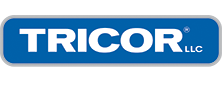 The old proverb says, “Don’t cry over spilled milk.” While it’s certainly a waste of time and energy to cry over it, you should take spills very seriously—especially those in the workplace. Whether you spill milk, coffee, oil or chemicals, any kind of workplace spill can lead to serious problems or injuries. Not only could your workers slip and fall, but they may also be exposed to dangerous substances and fumes.
The old proverb says, “Don’t cry over spilled milk.” While it’s certainly a waste of time and energy to cry over it, you should take spills very seriously—especially those in the workplace. Whether you spill milk, coffee, oil or chemicals, any kind of workplace spill can lead to serious problems or injuries. Not only could your workers slip and fall, but they may also be exposed to dangerous substances and fumes.
Spill Response
- Know your materials: Ensure that all your employees are familiar with the proper storage, handling techniques and spill response methods for each material in your workplace.
- Draw up a spill response plan: Create a worksite spill response plan and train your employees on how to respond to different spills. Maintain safety data sheets for each material on the worksite. These sheets should cover the correct spill response, cleanup and disposal techniques for each material. Make sure that each worker reads and understands your worksite spill response plan, and keep copies of the safety data sheets easily accessible so employees can refer to them quickly if necessary.
- Use the right gear: When cleaning up a spill, workers should wear the appropriate protective gear, including gloves, safety glasses, coveralls and respirators. Make sure that all employees know where this gear is stored and when and how to use this equipment.
- Respond immediately: If a worker causes or finds a spill, they should notify their supervisor and surrounding coworkers immediately. If the spill is flammable or volatile material, shut off all flame sources and air out the area if it’s safe. Barricade the spill area so workers avoid exposure to the substance, and try to prevent the spilled material from entering floor drains or outside areas. If a worker is exposed to dangerous spilled material, get them to a well-ventilated area and use emergency eye washes or showers on them for at least 15 minutes. If necessary, seek medical attention.
- Ask for help: While workers can handle some spills themselves, other spills should only be cleaned by an expert. Ensure that all your employees understand when it’s okay for them to clean a spill and when they should contact their supervisor or an outside professional for help.
- Know that size matters: Different sized spills should be handled differently.Generally, if a spill is equal to one cup or less, workers can simply wipe it up with paper towels or other absorbent materials. For a one-gallon spill, you can typically clean up the mess with spill socks, pads or absorbents. As workers clean these larger spills, they should surround the puddle with absorbent materials and work toward the middle of the spill—this will reduce spreading or splashing of the material. If the spill is two gallons or more, you might want to contact your emergency spill response team or an outside resource to handle the cleanup.
- Use proper disposal methods: Once you have soaked up the spill, use a broom and dustpan to sweep up all the wet towels, spill absorbents or other cleanup materials. Thoroughly clean and decontaminate the floor as well as any tools, machinery or other surfaces that might have been exposed to the spill. Double bag all the contaminated clean-up materials in plastic and place the bags inside a plastic or metal drum. Label the drum as “Hazardous Waste” with the date and the type of materials spilled. Arrange for proper storage and/or disposal of the drum.
Spill Prevention
- Use smart storage techniques: Store materials in appropriate, well-sealed containers in the proper environment. Group similar materials together and post each material storage area with the proper spill response technique and emergency phone numbers. Store all materials indoors, away from exterior doors and drains, to prevent accidental spills into the environment.
- Limit materials: Try to limit the amount of hazardous materials stored in your workplace. This will minimize the risk of major spills. If you must keep a large amount of a certain material or if you have any toxic or hazardous materials, store these substances in double containers.
- Move materials carefully: When you or your workers are moving materials, carry one container at a time or place multiple containers on a rolling cart.
- Look for leaks: Check all of your storage equipment, material lines and materials dispensing areas for signs of leaks as often as possible.
It’s practically impossible to make your workplace completely spill-proof. However, by using the proper spill prevention and response methods, you can greatly cut down on spills in the workplace and ensure that spills are handled quickly and safely when they do occur.

